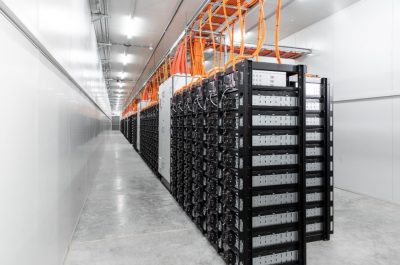Electric vehicles – tidal wave or grid’s best friend?
By Jordan Oliver joliver@energynetworks.com.au
Forget all that talk of electric vehicles ruining the weekend, have you heard the one about EVs ruining local power grids?
For those that haven’t, the story goes something like this…
EVs are a far-off approaching leviathan of grid demand that will blow fuses, cripple transformers and cause local network blackouts across Australia.
Some even tell a story about how network companies are hopelessly unprepared for this behemoth of electrical load and will battle to supply homes and businesses, let alone the new vehicle fleet.
These network obituaries are usually written assuming the absolute worst-case scenario of demand patterns occur, while also assuming absolutely no planning or action will be taken over the coming few years to prepare.
The reality, of course, is very different.
EVs have been in Australia for years now and their numbers are growing. And network companies have been monitoring loads and planning for their increasing uptake for just as long.
The latest figures show almost seven per cent of all new car sales in Australia were EVs, and battery-electric vehicles were the highest selling mid-sized vehicle in Australia over the first quarter of 2023.
And as for networks, they’re front and center in the conversations taking place in terms of how to manage a much larger EV fleet.
Senior leaders from two network companies recently fronted a CarSales podcast to explain just how much work and planning is going into getting ready for more EVs on our road – and on our networks.
Transgrid Chief Executive Officer Brett Redman shared insights into what the future of electricity in Australia could look like and what his company is doing to adapt.
CitiPower and Powercor’s Chief Financial Officer Garrick Rollason also joined the episode, to highlight the immense work taking place at the distribution level.
A plan for a plan
Earlier this month the Federal Government announced an eagerly awaited National Electric Vehicle Strategy, with a plan for a fuel efficiency standard at its centerpiece.
The strategy also includes initiatives to support battery recycling, infrastructure planning, apartment building design and training for emergency services workers.
Energy Networks Australia’s acting CEO Garth Crawford said the strategy was a good start and brought a welcome national focus to a fundamental issue for customers and the grid.
“For cost savings and grid benefits to customers to be maximised, we need smart EV charging and pricing reform. This would encourage and reward efficient charging behaviour and provide flexible electricity pricing for customers to make power supply cheaper when it is plentiful – for example during the day to soak up solar generation.”
Mr Crawford said the right policy settings would avoid the need for more expensive upgrades of electricity infrastructure and deliver major savings for customers on household energy bills while supporting grid security and reliability.
Further announcements have been made following the strategy, including plans to build 117 fast EV charging sites along national highways to better connect towns and cities.
The Federal Government partnership with NRMA will ensure there is a fast charger about every 150km on national highways. This included unveiling a national map of charging sites, highlighting new sites to be delivered, including regional and remote areas in every state and territory.
Smart networks, smart meters, smart chargers
Networks are not sitting around waiting for a mass EV uptake to happen. They are busy learning how and when EV drivers prepare to charge their vehicles, how pricing signals might encourage charging behavior changes and what physical impacts to networks might take place with EV-sized charging loads.
Indeed, there’s a strong case to be made that with the right settings driving EV electrical loads to avoid peak times and to target times of high solar penetration, electric vehicle charging will actually help the grid.
One of the most prominent trials has been the multi-network trial led by Jemena, which includes networks in three states including United Energy, Ausnet Services, Evo Energy and TasNetworks.
The EV Grid trial provided 170 EV owners across Victoria, the ACT and Tasmania with a smart charger, which not only charges EVs up to three times faster than the chargers that usually come with the vehicle, but also allow electricity network operators to dynamically adjust when the vehicle charges.
This means participants’ EVs can be plugged in when it’s convenient, but charged at times when the electricity grid has more capacity, whether that’s after midnight, or during the day when excess solar energy is being fed back into the grid – ideally leading to lower electricity bills for all consumers.
Through the trial, participants have more visibility of their EV charging data, as well as being able to charge their cars faster, and electricity network operators will gain a better understanding of how to work with EV owners to manage the increasing demand on the grid.
‘Solar soak’ events on forecast sunny days are also a key feature of the trial. During these events, participants are notified ahead of time to have their cars plugged in during a day when there is an abundance of solar energy being exported into the grid, to better understand the impact of EV charging in absorbing surplus electricity and helping manage grid voltage.
Protecting customers
Being highly regulated, networks must consider the interests of customers in everything they do.
And so they should. But networks are no longer alone in managing customer connection points. Plenty of other players are lining up to provide a range of electricity services at the household level, and that includes electric vehicle charging infrastructure.
It’s critical to ensure the same protections for customers exist no matter who they are dealing with – be they a network or another service provider.
CitiPower and Powercor’s submission late last year to the AER’s consumer protections for future energy services options paper, highlights that the regulatory framework should apply to any party engaged in the activity of selling energy or energy-related products – including electric vehicle (EV) charging.
“It is important the AER plays its role in ensuring trust is not further eroded by an influx of ‘energy cowboys’ or new products and services that somehow ‘fall between the gaps’ of the regulatory framework,” the submission read.
“There is increasing complexity in the energy market and there will be an increasing number of customers who may not understand the market.”
“As a result, it is crucial that (consumer protections) apply to all connection points and energy related products or services.”
More:
- Read a copy of ENA’s submission to the National EV Strategy Consultation here.

